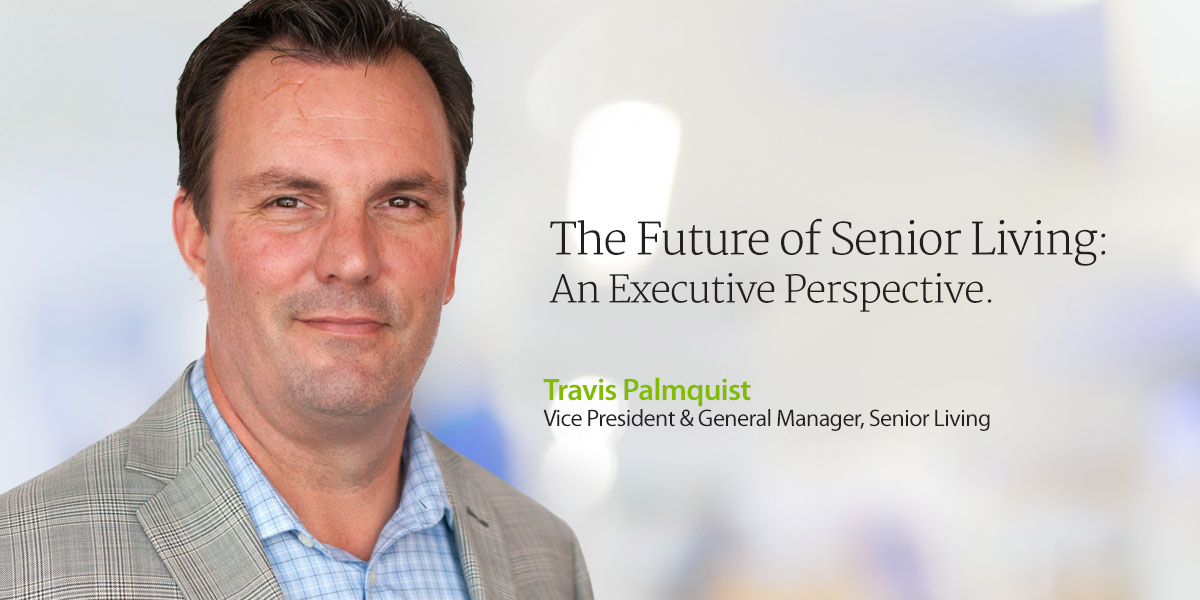Travis Palmquist, Vice President & General Manager for Senior Living at PointClickCare, recently moderated a panel of senior living executives to discuss the future of the industry, along with trending challenges and opportunities.
From record-low occupancy rates, to staffing shortages, to changing needs of residents, community leaders have their hands full. Here’s how the panelists are managing these challenges:
Trust Data, Not Hunches
Although the CEOs who took part in the panel discussion expressed satisfaction with their current jobs, along with the state of the industry overall, they acknowledged that in managing the various challenges, they have had to find new solutions — some of which have created new demands for them along with their staff.
“It’s a 24/7 business,” Keven J. Bennema, president and CEO of Naperville, IL-based Charter Senior Living, explained during the panel discussion. As a relatively new provider, Charter has begun tracking all resident incidents, concerns, and complaints — and it has discovered that a lot of these incidents happen overnight when community administrators aren’t on site.
This has reinforced Bennema’s belief in the importance of data in senior living, and the role that data can play in keeping a community’s occupancy high.
“Certainly, occupancy is incredibly important, and if you’re not tracking your key statistics, your key sales and marketing data, your analytics on a day-to-day basis, you know, you’re dead in the water,” he said.
Bennema certainly isn’t one to trust hunches over data.
“I [don’t like] hearing from the marketing team, ‘I’m feeling good about things,’” he said. “I love those visceral feelings, but unless that’s backed up by data, to me, that’s nothing more than gastrointestinal pain.”
Where Senior Living is Headed
Today’s senior living residents want more options, and their needs are greater — especially where care is concerned, Palmquist noted during the panel.
“We are hearing… from providers how residents want more choice, how residents’ expectations are evolving,” Palmquist said.
All the while, the industry will need to grow exponentially to cater to the large number of aging Americans. This growth may not happen very smoothly, however.
“It’s going to be rocky… there are going to be some ups and downs along that trail,” Randy Richardson, president of Chicago-based Vi, said. “It’s not going to be a hockey stick kind of growth rate.”
The more communities that are built, the more workers the senior living industry will need to attract. This definitely keeps some senior living CEOs up at night.
“One of the concerns I have is the human capital in the business,” Bennema explained. He believes that senior living staff needs to function effectively, efficiently and smoothly to provide the best care to residents — which is really what the entire business boils down to.
“At the end of the day, if you’re not providing the right care, none of this matters,” Bennema said.
Tana Gall, CEO of Portland-based Blue Harbor Senior Living, believes it’s important to treat all of her senior living employees with respect — and that doing so will translate positively to residents’ experience.
“I hope that I can make a difference in an employee’s life every day because if I do that, then residents are getting taken care of,” Gall said during the panel discussion.
Overall, the senior living industry is a great place to work, in more ways than one, added Ken Jaeger, founder and CEO of Denver-based provider MorningStar Senior Living.
“I’m very excited about the future,” Jaeger said during the panel discussion. “I don’t think that there is a more blessed industry on Planet Earth.”
To read a full summary of the panel discussion, visit The Leadership Series.







